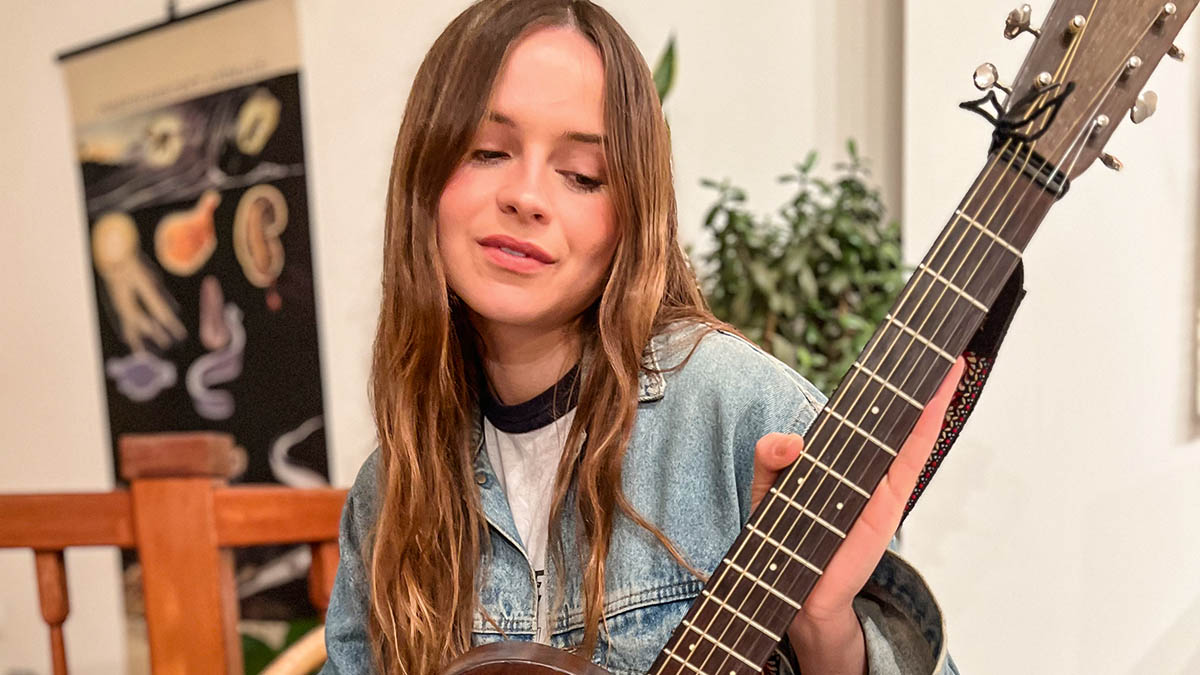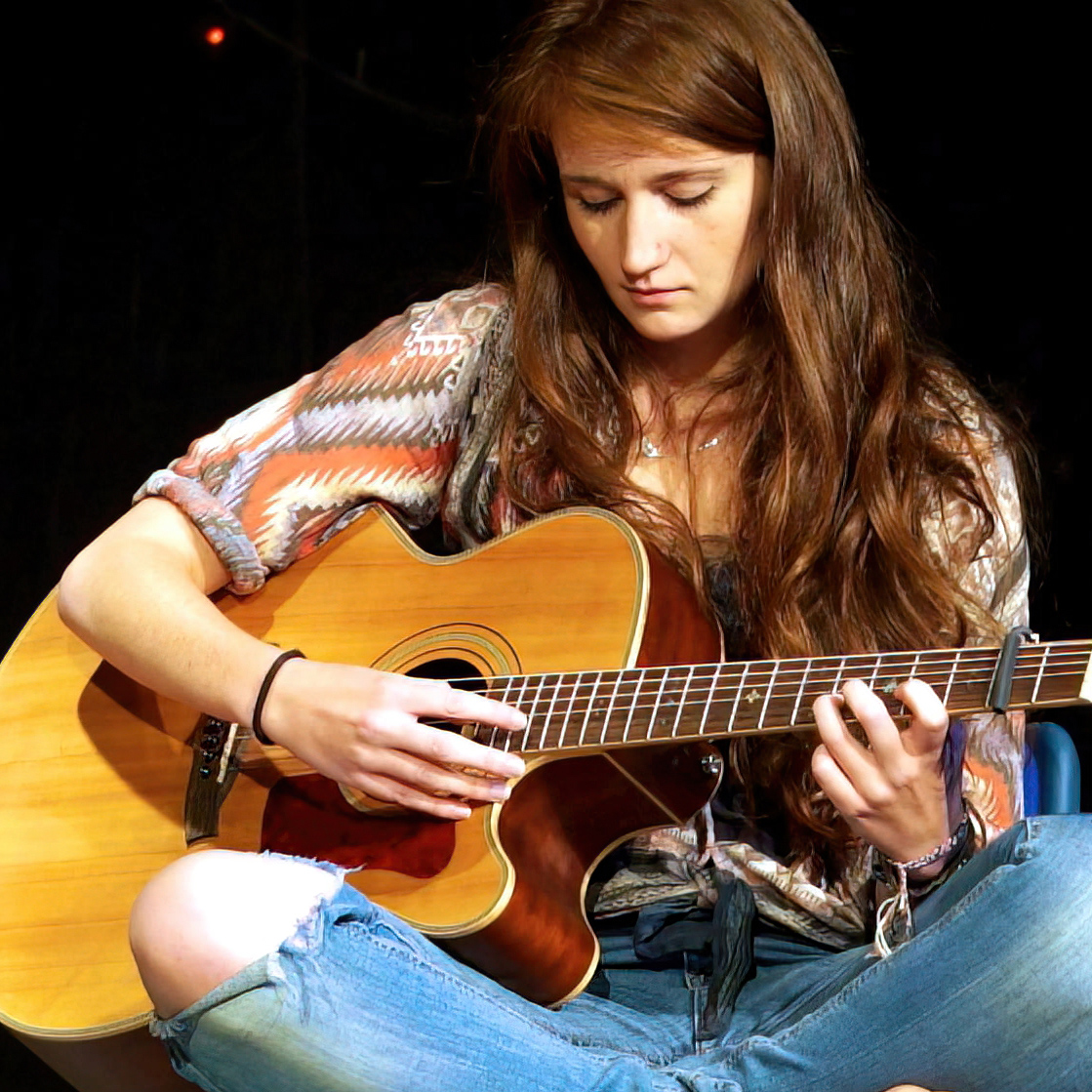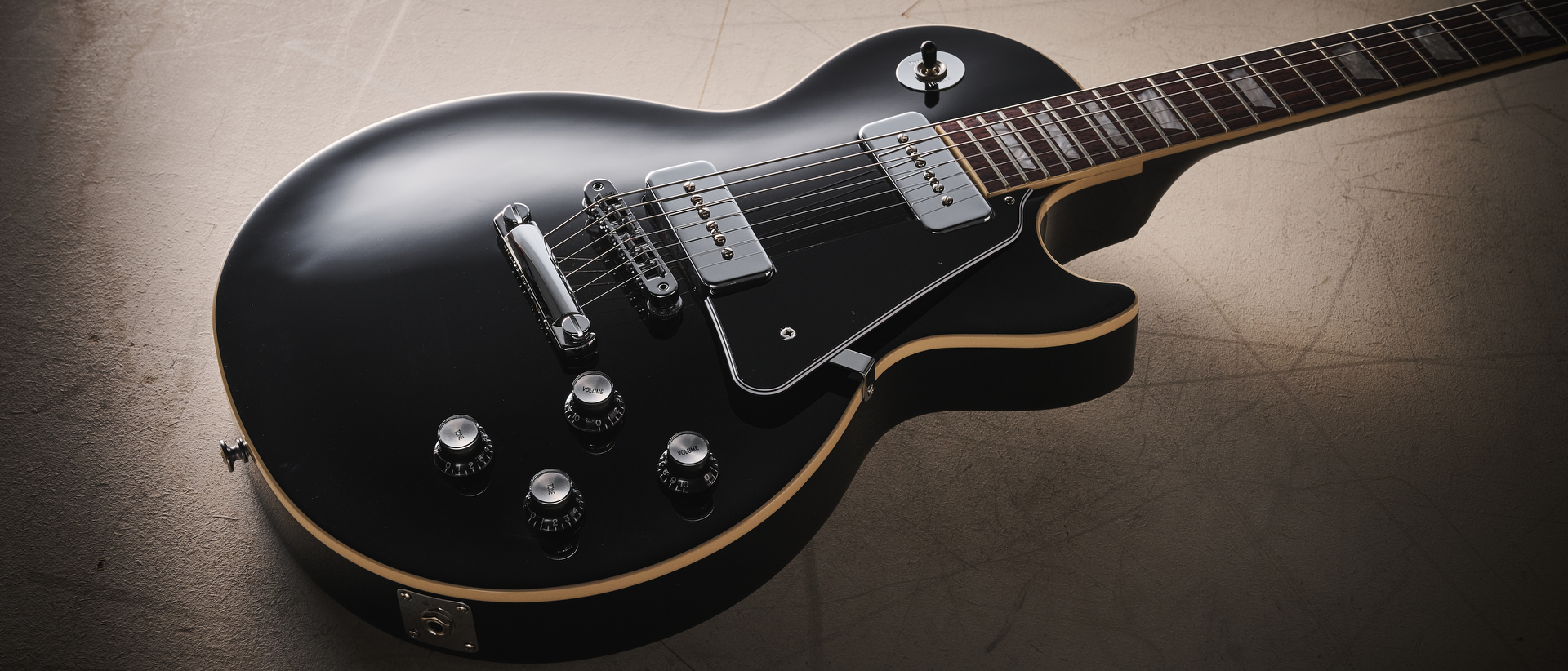Gabrielle Aplin on her love of vintage Martin and Gretsch models, using electrics like synths and why she has a guitar called ‘The Mel Gibson’
Singer-songwriter Gabrielle Aplin composed her new album on a vintage Martin, but still has a soft spot for her junk-shop special

It’s a case of new year, new album for Gabrielle Aplin, who returns this month with Phosphorescent, her fourth LP. Written on her beloved 1940s Martin 0-17 at her Somerset home, the songs took their cue from the natural world that surrounded her.
Homespun acoustic guitars then developed across an unfolding landscape of 11 texturally rich songs with the help of producer Mike Spencer (who also steered her Gold-certified debut English Rain) at his The Lark’s Tongue eco-studio.
As Gabrielle says of the album’s concept: “I wanted the first track to feel like waking up on a hazy Sunday morning and the last track to feel like the night of the best day ever.”
In conversation with Total Guitar, she discusses playing, song development, and favourite guitars – including one affectionately dubbed ‘The Mel Gibson’, which (spoiler alert) was not made by the US guitar giant.
Phosphorescent has a very familiar backstory – like so many recent albums, it was written in isolation during lockdown.
“Yeah. I’d just released an album, I was on tour and the next thing I knew, I was at home in my pyjamas! So when I’d baked every banana bread I could possibly bake, I sat down and wrote some new songs. No-one had told me to make an album. I was writing with no agenda and expressing myself as I did before I ended up doing this as a career. It was so pure.
“But as much as I loved the process and loved the songs, they felt very isolated, and I wanted to counteract that in the recording process by making sure it was very human and physical. So the album has a physicality.
All the latest guitar news, interviews, lessons, reviews, deals and more, direct to your inbox!
“We made sure everything had a space, even the electric guitars. Everything went through a huge speaker, all the synthesizers went through a Leslie – everything had to have a physical space to counteract the online, on-screen nature of the previous couple of years.”
When it’s just you writing on an acoustic guitar, are you able to envision what the whole production will be like when it’s fully populated with other instruments?
“For some of the songs, 100 per cent. What was amazing about making this album in comparison to the last one, was that - with the last one - I’d make one song in a studio in one city with one producer, then go to another country, meet another person and write. I found myself having to teach myself to play the songs, even though I’d just written them.
Because I’d written on the guitar, I was able to perform this whole album from start to finish before even recording. It’s so important, as a singer-songwriter, to be able to do that
“Because I’d written on the guitar, I was able to perform this whole album from start to finish before even recording. It’s so important, as a singer-songwriter, to be able to do that. Maybe that was a part of myself I’d lost in the previous album process. Having the song version is most important; anything else is like dressing yourself up in cool clothes. It’s a case of knowing what suits the song best.”

Do you have a good sense for knowing when a song is ‘fully dressed’?
“No! I feel like I have to let other people decide because I could just keep going, and sometimes I can ruin things! We’re so spoiled now because, even if you don’t have a sound or an instrument in the room with you, you can find a digital version.
“Everything is available. I wanted this album, which was very traditional in a lot of ways, to be a modern record, and it has that modernity because Mike would use technology, too. With some things, the digital versions are better, but with others, the real things are still best. We used a Fairchild to run vocals so that everything was passed through air. The plugin for that isn’t as good as the real thing!”
Did tradition meet technology in the ways you were using guitars?
“We’d record these paddy guitar tracks that we could loop over and over, or record me picking for one song and tune it down, cut it up and suddenly it becomes a main component for another song. I love that we can use instruments in traditional ways and also be forward-thinking. There are endless possibilities!”
What are your main guitars for recording?
“There’s a 1940s Martin 0-17 that I got from No.Tom on Denmark Street. It was sourced for me by my friend Luke Potashnick, who was the guitarist in The Temperance Movement, and also worked with me on this album. I just love old things. I have a 000-15M as my main touring guitar.
“I don’t really take my vintage one out with me anymore because it’s a pain in the arse for sound engineers, but I love it! I wrote everything on it. Maybe it’s because I don’t like change, but I feel the older things are, and the more played-in things get, the better they are.”
The most sustainable guitar you can have is the one you’ve already got! I hadn’t thought about it that way, but it’s almost trendy now to have second-hand things
You’ve spoken about taking an eco-friendly approach to the album’s production and being inspired by Mike’s studio being sustainably powered. So, vintage guitars are actually the sustainable choice, too, right?
“Yeah, the most sustainable guitar you can have is the one you’ve already got! I hadn’t thought about it that way, but it’s almost trendy now to have second-hand things. House clearance auctions are my heaven, and vintage guitar shops like Norman’s Rare Guitars in L.A. are just a wonderland. I’ve played some really cool old guitars in there.”
Have you taken any home with you?
“I bought a 1960s Gretsch Chet Atkins Nashville that I used on the album. It’s amazing! I also have a Silvertone U-1 and I love it because, even though it’s electric, it feels like an acoustic with its hollow body.
“You can thrash it around and it’s chunky. I love playing the Gretsch up high and using the guitar almost like a synth. It’s good for atmosphere and sparkly bits – as an add-on after I’ve done the main part of the song.”
How much experimentation do you do with pedals?
“A little bit. I’m not into making chains of pedals. On tour, I use a reverb and a bit of tremolo, but that’s it. I’d rather have something that’s similar across the set. I think using an electric guitar is as hi-tech as it gets for me, but I’ll manipulate the sounds in Logic or Pro Tools.”
Tell us about a moment on Phosphorescent you’re particularly proud of...
“I love Don’t Say. There’s a thing in there that sounds like synth chugging along that was actually this shitty guitar. I say shitty, but it’s the best! I got it for twenty quid in a flea market called Snoopers Paradise in Brighton and it’s got no brand – it’s some kids’ learning guitar from the ’80s.
“It’s got nylon strings and stickers all over it that say stuff like, ‘Wow!’ and ‘Great job!’ There’s a sticker of Mel Gibson on it, so we call it ‘The Mel Gibson’. I love how that song came together. It sounds like a dance tune and it goes off on one at the end, but it starts so like the way I had written it.”
- Phosphorescent is out now via Never Fade Records.
Since graduating university with a degree in English, Ellie has spent the last decade working in a variety of media, marketing and live events roles. As well as being a regular contributor to GuitarWorld.com, she currently heads up the marketing team of a mid-scale venue in the south-west of England. She started dabbling with guitars around the age of seven and has been borderline obsessed ever since. She has a particular fascination with alternate tunings, is forever hunting for the perfect slide for the smaller-handed guitarist, and derives a sadistic pleasure from bothering her drummer mates with a preference for wonky time signatures.

